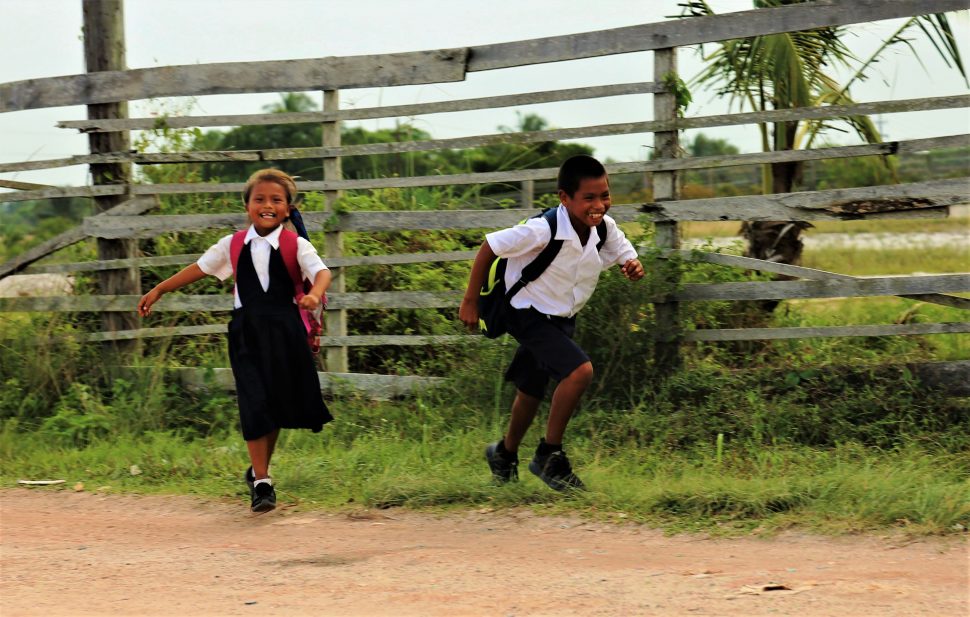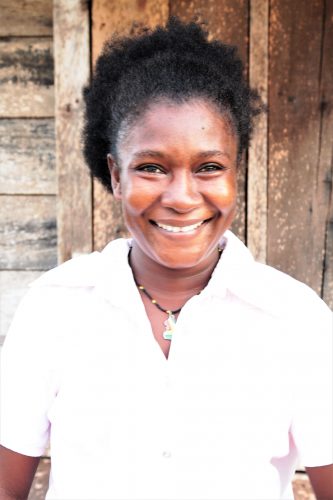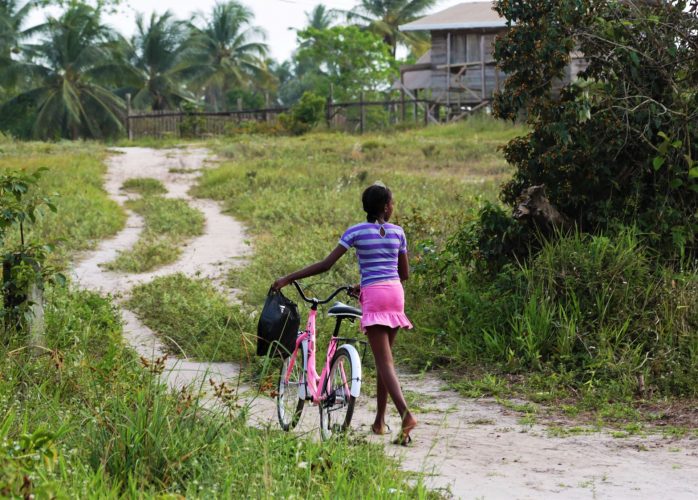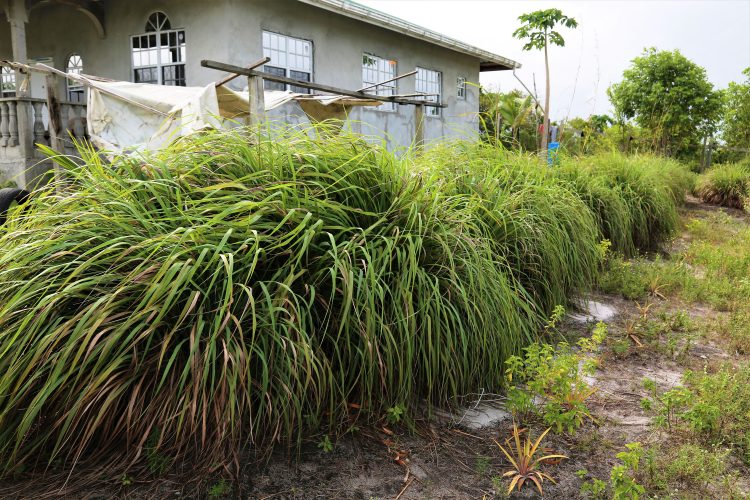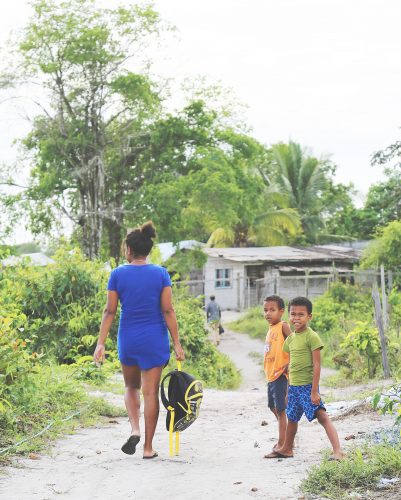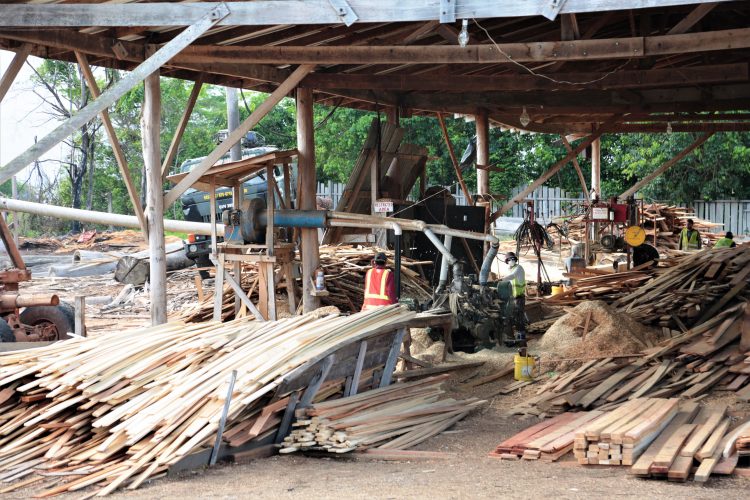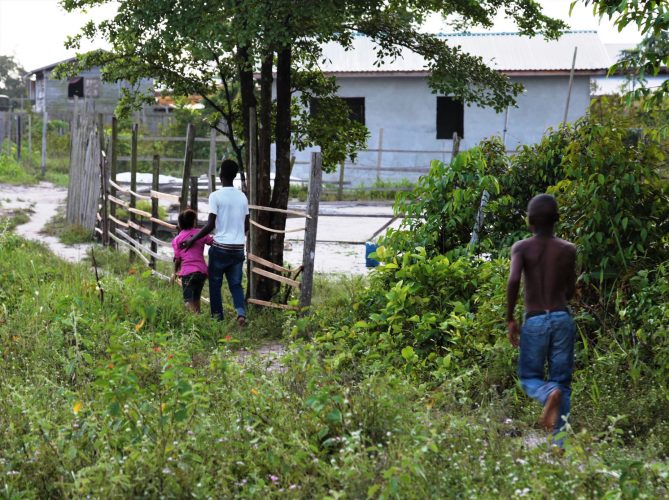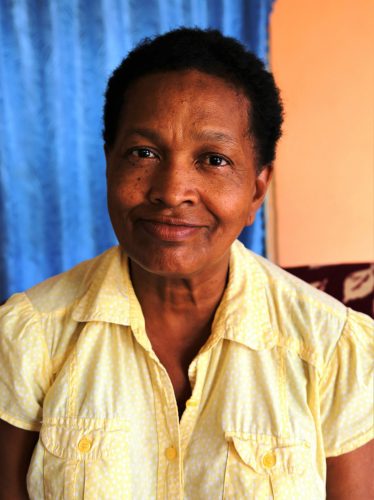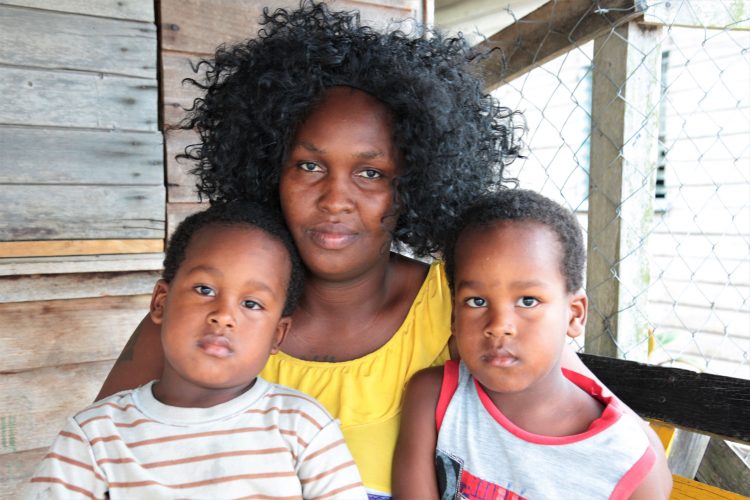Andy Ville is one of the last villages in Wismar, Linden along the road that leads to Lethem. A relatively new village, Andy Ville moved from having a single occupant around 15 years ago, to being home to almost 300 households.
The village was named after the first man who lived in it, Andre ‘Andy’ Seaton, though he was away at work at the time of my visit.
Andy Ville sits on a sandy hill in Wismar, bordered on three sides by Prosville, Blueberry Hill and One Mile, with the forest behind it. The entrance to the village is a wide, red road that separates Andy Ville from One Mile and is situated opposite the entrance to Block Twenty Two. A sign marks the entrance.
Life in Andy Ville is a struggle. For more than a decade, residents had no potable water and would have to make their way to a creek some distance away or get water from One Mile. A few years ago pipelines were installed to take water a far as street level; it doesn’t always flow. The village has no electricity. All of the roads are sand tracks that were cleared by the villagers. The people face their daily struggles with a togetherness that belies the fact that many of them came from different parts of Guyana.
Veronica Duncan moved from Bartica to Linden with her grandmother, a brother and a sister when she was six years old. She is unsure where they first lived, but knows that for the majority of her life she lived in Christianburg. Five years ago, she moved to Andy Ville.
“There were bushes all around. We had no water when I first come in here. We used to got to fetch water all the time from the creek; we had to bear we chafe [endure their suffering],” she said. “The dead sand and having to walk up the hill with a bucket of water was stress. Thank God they put in water in the streets now. The water doesn’t always come so we make sure to get a black tank.”
One of the major issues, Duncan said, was the lack of electricity. “Night time does be pitch black. Because of no electricity one and two robberies would happen along the streets when the place gets dark. Persons would try to get home before nightfall.”
Another of the challenges of living in Andy Ville is the distance to the road where transportation runs. Persons fetching groceries home would have to use taxis and the drivers, in most cases, drop them at the top of the road, since not all of the tracks are wide enough to cater for vehicles.
Apart from this, Duncan said, she liked living in Andy Ville. She listed the quiet — no noise blaring from music sets — and the breeze which makes it “lovely for drying clothes,” among the benefits.
Fourteen years ago, Carlotta Carter, her husband and three oldest children moved to Andy Ville from Jonestown, Mahaica. Since then, Carter her husband have had eight more children, including twin boys and twin girls, although the girls did not live. The oldest of her children is 24, while the youngest is six months old.
After getting married and settling in One Mile with her husband, Carter found that the lively, noise village jarred, compared with her quiet home back in Mahaica. She persuaded her husband to leave and they began squatting in Andy Ville. At that time, the woman noted, no one lived in her half of the village so she was surrounded by bush everywhere. She recalled that for the first three weeks, she and her family slept under a roof in hammocks while waiting for the owner of the sawmill to deliver the wood to build their home. The woman said that wild pineapples grew all around then and many times they made a meal from them.
“We struggled a whole lot. We used to have to fetch water from One Mile. We started farming vegetables, sweet potato and plantain. I burned three coal pits too. To water the plants we had to fetch a lot of water. Because of this water issue we lost a hundred pounds of cabbage,” Carter said. For years, she was ‘the greens lady’ of Blueberry Hill, Block Twenty Two and One Mile. While she sold greens, her husband worked in the interior as a miner.
Carter said she and her family were alone for two months before someone else moved into the area, settling some distance away. Yet she was mostly alone with her children since her husband would be away at work and her new neighbour would leave to stay with relatives whenever her husband went off to work. It took two years before other persons began moving in and Carter said she was happy for the company as the area was quieter than she had wanted. Her husband, listening nearby, joked that it was not that quiet anymore and they might just have to move again.
Their children were able to attend Mount Carmel Nursery and St Aiden’s, both in Blueberry Hill and Christianburg/Wismar Secondary. At present, one of her sons is attending the Linden Technical Institute.
Carter said that a large number of families in Andy Ville were headed by single parents.
Joy George moved from Victory Valley where she grew up, to live in Andy Ville with her family four years ago. “It took me while to come here,” she said, “but compared to Victory Valley, it’s a better environment here to raise your children….away from the [marijuana] they be smoking and the regular early morning cuss outs.”
George’s two children attend Mackenzie High and New Silver City Secondary schools. Her husband works in the interior.
She recalled the early struggles to get water and during the period when she her children attended primary school and took lessons in the afternoon. They would often have to walk home when it was nearly dark and she would have to hurry from work to meet them halfway. The lack of electricity is still an issue, but her children are now old enough to get home by themselves.
George and other villagers would charge their phones as well as charge car batteries to use for light, blending seasoning and ironing school clothes. Sometimes children would sit at the sawmill in the evening, working on their homework and assignments. The villagers pay a fee to use the electricity.
George plans on buying a solar panel soon to make things easier on the family. Her yard is filled with plants which she and her husband planted together – red beans, green sorrel, pumpkin, ochro, cane, boulanger, squash, calaloo (chow rai bagee), thyme, watermelon, fever grass, coconuts, pineapple and buck cashew.
“We really need water, light and roads here,” George said.
I was able to get a number for Andre Seaton and we were able to talk on the phone.
“I grew up in One Mile,” he told me. “This place was a dumpsite for the hospital and people from the villages around. I was the first person to move here 15 years ago. Here was a jungle. The place was a mess. I started to build and would try to stop these people from coming and dumping. I told them this place could be a better place to live if they would stop dumping their garbage. Some of them were annoyed and we had our problems. I started cleaning the place up, some people come and collected whatever scrap iron they could find and we burn most of the garbage. And as time go by, like three years after, other people start to occupy the place.”
According to the man, it was very difficult adjusting at first to challenges for light and water and persons from other villages taunting him about choosing to live at a dumpsite. But he had a vision, he said, and could see it becoming a really nice place to live. Today Andy Ville is a clean village compared to what it was like when Seaton had moved in.
Growing up in One Mile where his father was a farmer, Seaton has taken to farming himself and would do construction sometimes.
What he had envisioned for Andy Ville has come through so far and now he wishes for the basic amenities like proper roads, potable water in each yard and electricity. He also would like to see the community have its own health centre, a computer hub for the youths and a recreational centre.
